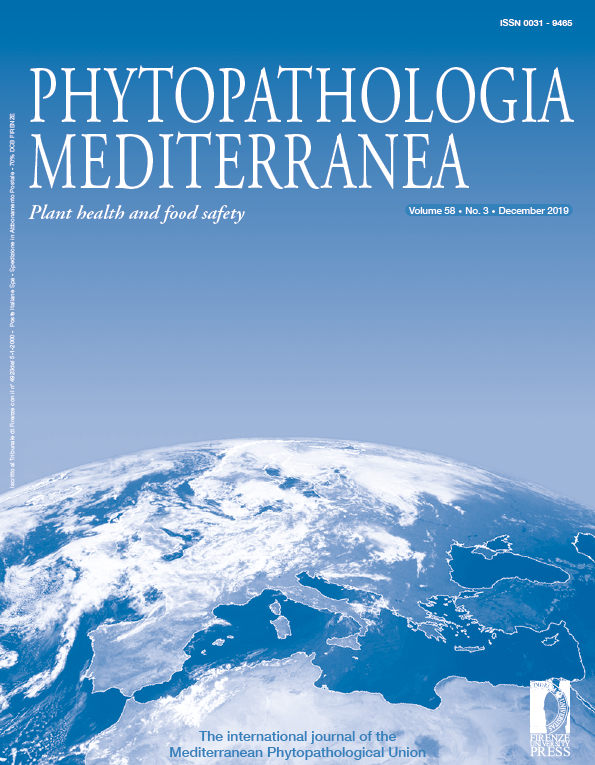Published 2019-12-30
Keywords
- Powdery mildew,
- Erysiphales,
- Erysiphe punicae,
- host range expansion
How to Cite
Abstract
Pomegranate is important as an ornamental tree with spectacular flowers and delicious fruits, consumption of which has potential health benefits. In 2018 and 2019, pomegranate leaves infected by powdery mildew were collected at two locations in Hungary. One collection of the pathogenic fungi from each location was identified based on morphology and internal transcribed spacer (ITS) region analysis. One sample had pseudoidium-type conidiophores and lobed appressoria, and the other sample had catenate conidiophores and conidia with fibrosin bodies. Chasmothecia were absent in both cases. Based on morphology and ITS sequence analysis one powdery mildew fungus was identified as Erysiphe platani, and the other latter as Podosphaera xanthii. Pathogenicity tests were conducted with both species. This is the first record of powdery mildew on Punica granatum caused by E. platani and P. xanthii. Erysiphe platani has been reported only from Platanus species and Ailanthus altissima, while P. xanthii has a broad host range including more than 12 plant families.







